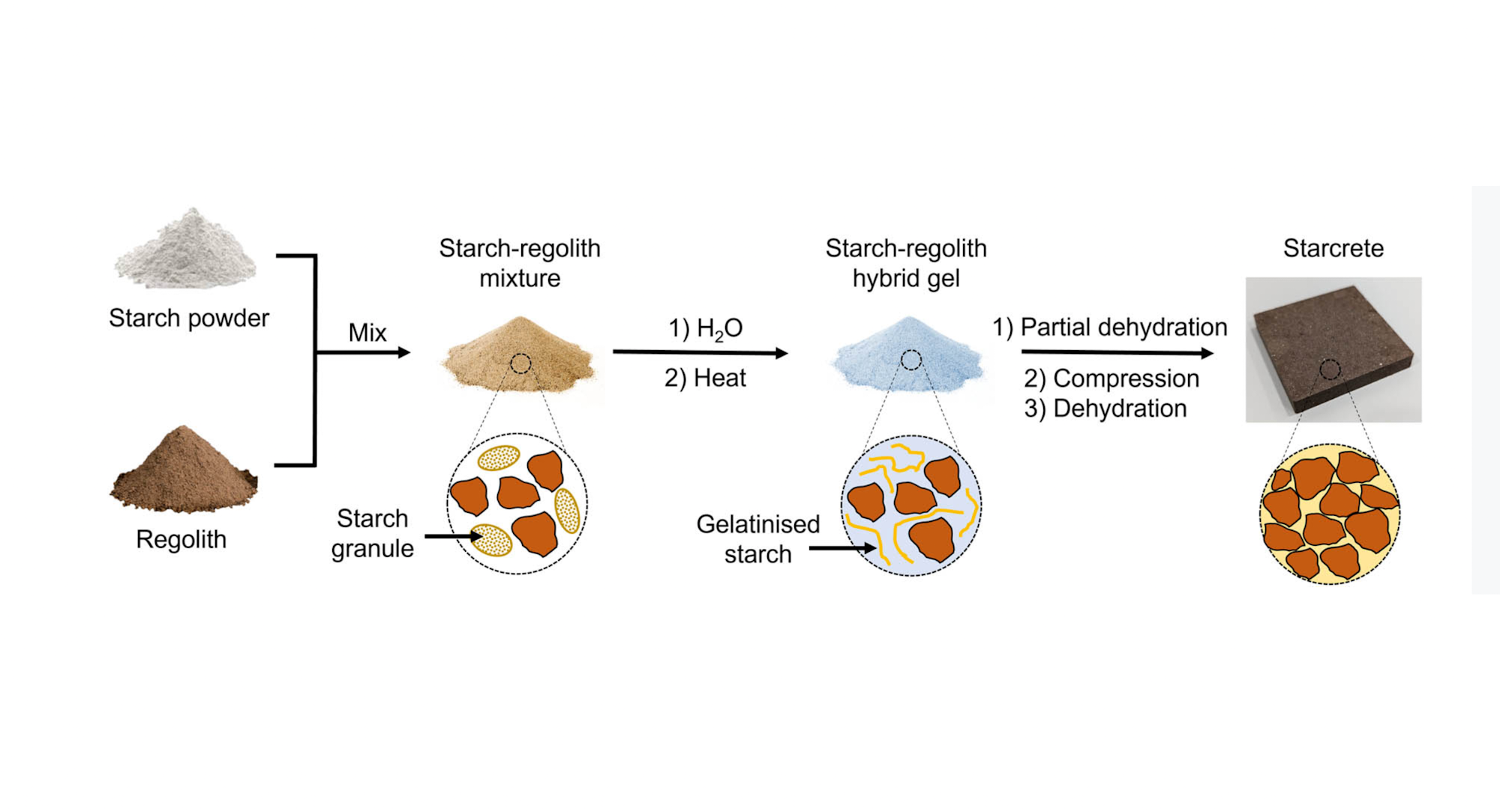Building on Mars and the Moon: Scientists Develop StarCrete, a Strong Alternative to Concrete
The concept of constructing infrastructure on Mars and the Moon has fascinated scientists and space enthusiasts for decades. With space exploration advancing rapidly, building sustainable structures on extraterrestrial surfaces is more than just a dream—it is a necessity. However, the challenges of construction in space are immense, requiring innovative solutions to overcome the harsh conditions and exorbitant costs associated with space missions. Now, researchers have developed a remarkable new material that could revolutionize space construction: StarCrete.
The Need for New Construction Materials in Space
The challenges of building on Mars or the Moon are formidable. Transporting construction materials from Earth to these distant locations would be astronomically expensive due to the weight and size of the materials needed. A typical three-bedroom house on Earth requires about 7,500 bricks. To send such a massive load to another planet would be both costly and logistically complex. The heavier the materials, the more expensive the transportation.
This is where the concept of in-situ resource utilization (ISRU) comes into play. ISRU involves using materials available on planetary surfaces to create the infrastructure needed for habitation. This approach significantly reduces the need for transporting materials from Earth, making space exploration more sustainable and cost-effective. Scientists have been exploring various materials that could be sourced directly from Mars or the Moon for construction purposes, and StarCrete is one of the most promising developments in this field.
What is StarCrete?
StarCrete, developed by two researchers from the University of Manchester in England, is a concrete alternative designed specifically for use in space. It consists of simulated Martian or lunar soil, potato starch, and a pinch of salt. Remarkably, this simple combination results in a material that is twice as strong as conventional concrete and can be produced using resources readily available on Mars or the Moon.
In their research, the scientists found that potato starch serves as an effective binding agent when mixed with Martian or lunar soil simulants. This breakthrough material could not only be used to build infrastructure on Mars and the Moon but also has potential applications here on Earth as a greener alternative to traditional concrete.

Superior Strength: The Science Behind StarCrete
One of the most exciting aspects of StarCrete is its strength. Conventional concrete has a compressive strength of approximately 32 Megapascals (MPa). In comparison, StarCrete made from simulated Martian soil boasts a compressive strength of 72 MPa, while StarCrete made from simulated lunar dust reaches an impressive 91 MPa. This strength makes StarCrete more than capable of withstanding the extreme conditions found on other planetary surfaces.
The researchers’ findings indicate that only 55 pounds of dehydrated potatoes would be needed to produce nearly half a ton of StarCrete, which is enough to manufacture over 200 bricks. This efficient use of resources makes StarCrete an incredibly cost-effective solution for space construction.
The Role of Potato Starch and Salt in StarCrete
Potato starch, a readily available and renewable resource, plays a key role in the creation of StarCrete. Astronauts will need to produce food on long-term space missions, and starch is likely to be a part of their diet. This led the researchers to consider using potato starch as a binding agent, replacing earlier experiments.
In addition to potato starch, the researchers discovered that magnesium chloride, a common salt compound, enhances the strength of StarCrete. Magnesium chloride is found on the surface of Mars and in human tears, making it another accessible and renewable resource for space missions. By combining potato starch and magnesium chloride with Martian or lunar soil, the researchers have developed a material that is not only strong but also sustainable and resource-efficient.
StarCrete’s Earthly Potential
While StarCrete was initially developed for space applications, it has the potential to revolutionize construction on Earth as well. Traditional concrete production is responsible for significant carbon dioxide (CO2) emissions, contributing to climate change. The production of concrete involves high-temperature kilns, which consume large amounts of energy and release CO2 into the atmosphere. In contrast, StarCrete can be produced at normal home baking temperatures using an oven or microwave, drastically reducing the energy requirements and environmental impact of the production process.
This greener alternative to conventional concrete could be a game-changer for the construction industry, offering a more sustainable and cost-effective option for building infrastructure on Earth. By reducing CO2 emissions and cutting energy costs, StarCrete aligns with global efforts to combat climate change and promote eco-friendly construction practices.
Looking Ahead
The development of StarCrete represents a significant step forward in the quest to build sustainable structures on Mars and the Moon. As space agencies and private companies continue to explore the possibility of human settlement on other planets, the need for innovative construction materials will become increasingly important. StarCrete offers a practical, strong, and sustainable solution for these challenges.
In addition to its potential for space construction, StarCrete could have far-reaching applications on Earth. Its low-energy production process and reduced environmental impact make it a promising alternative to traditional concrete, offering a cleaner and greener option for future infrastructure projects.
Conclusion
As humanity looks to the stars, the development of materials like StarCrete will be crucial for enabling long-term space exploration and colonization. With its impressive strength, sustainability, and cost-effectiveness, StarCrete is a testament to the power of innovation in overcoming the challenges of building in space. As research progresses, StarCrete could very well become the foundation upon which future civilizations on Mars and the Moon are built—and it may even transform how we construct buildings here on Earth.

